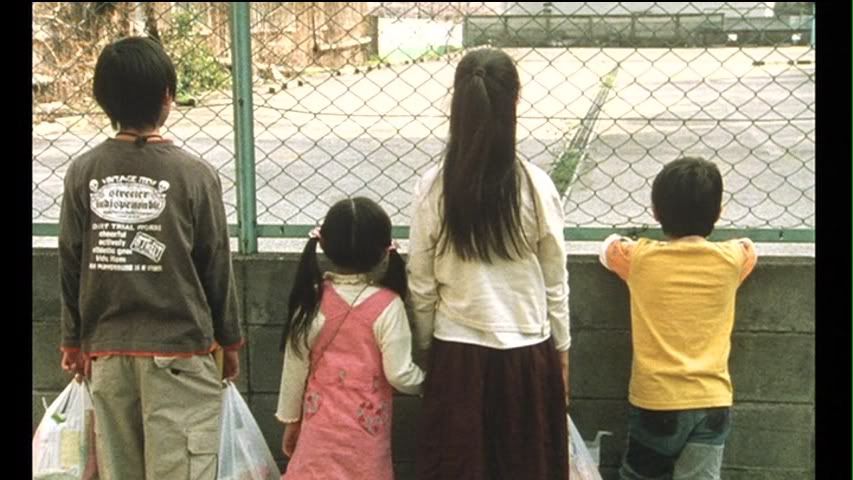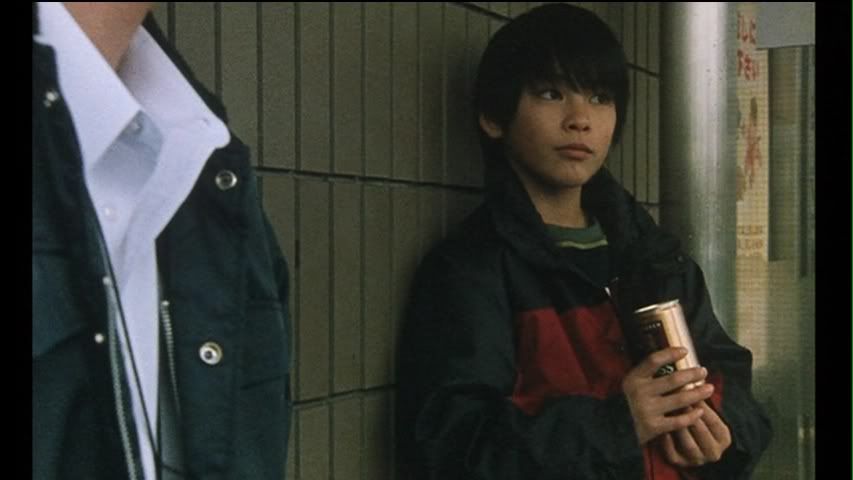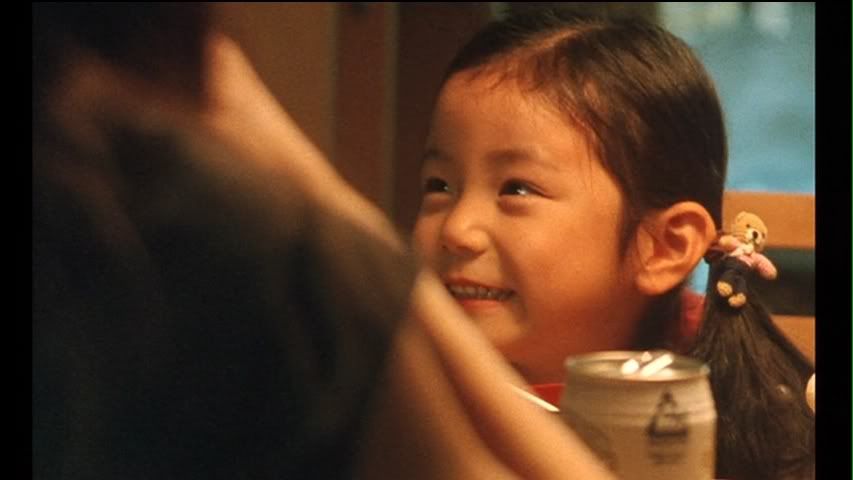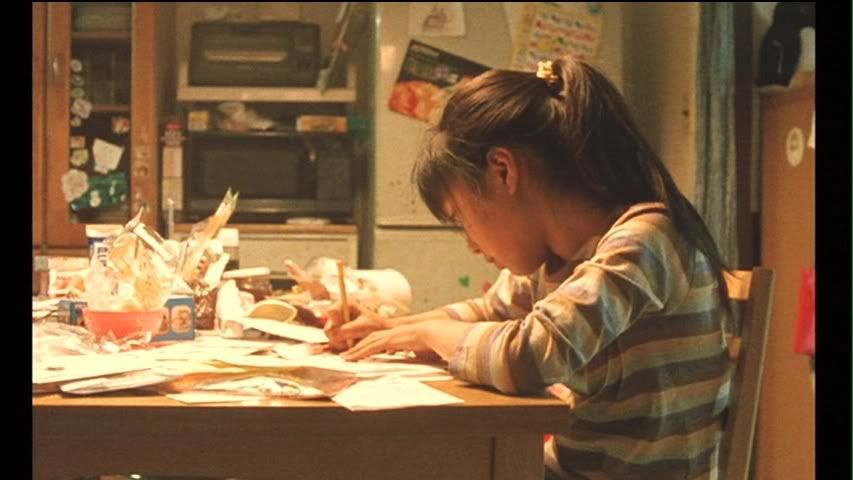
The four abandoned kids.
The plot of Dare no shirani (Nobody Knows) is straightforward and intriguing: once upon a time in an apartment complex in Tokyo, four children aging 4 to 12 were abandoned by their waifish and possibly demented mother. These kids then have to survive on their wits, almost entirely guided by the eldest, the 12-year-old son, Akira (Yūya Yagira).

Great urban aesthetics.

Yūya Yagira carries the weight of the film as eldest child Akira.
The film itself has an external sheen of beauty; we watch sunlight drip through the leaves onto clean, white pavements. There is a sense of tranquility. Most of the scenes are quiet, without any sound except for sneakers scuffing the sidewalk. Some scenes feature little to no action at all. If you didn't know it was about such a terrible case of child abuse, you would think it was quite beautiful, in a peaceful way. Indeed, the initial scene is set up just for this purpose: when you don't understand what's happening, it's serene and aesthetically pleasing. When the scene is repeated at the end of the movie, and you know it's significance, it becomes terrible.
That's when the aesthetic turns into something else: amidst all that sunshine, the abandoned children's dirtiness only comes out more starkly, everything seems stale. The slow pace then becomes like a subtle gnawing. When will the mother return? The money soon runs out and we watch in horror as the food runs out too. Amidst all this stifling non-action, there are moments of powerful poignance: mostly when Akira tries to normalize his existence by making friends, playing baseball. These scenes are emotional enough to make your guts churn, yet no characters are crying or necessarily upset. But it's the pain of watching Akira be denied something so banal as a normal childhood. Argh! In fact, props went to Yūya Yagira, who won the Best Actor Award at Cannes for this film. (At only 14 years old!)

Momoko Shimizu as Yuki. Aww!
The film's grisly ending seemed outrageous to us, and we were horrified to learn that the real story was even worse! What then demands explanation is the film's hyperrealist presentation. A story like this naturally warrants moral chastisement, and yet the film - perhaps to greater effect - only tells it like it is, giving no embellishment, casting no blame. True, the mother seems worryingly irresponsible, but the camera is mostly mute in its treatment of the characters. That is, there are no emotional cues to guide us, and hence we are left disoriented, slowly piecing the story together ourselves, drawing our own conclusions. This brings us back to the first and last scenes, when Akira is on the subway with the suitcase. Nothing aesthetic about the scene tells us about its horror and sadness, it is only when we are informed by the facts that we can understand it.

An early scene of normality.


No comments:
Post a Comment